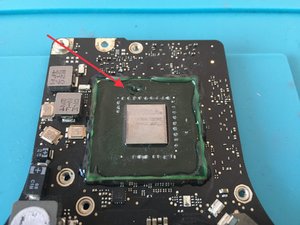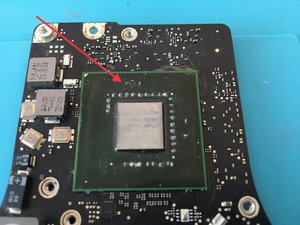Let me correct @arbaman - answer a bit.
Arberman is correct the 2011 models have a bad GPU and/or the VRAM chips. The issue is in fact the soldering which can be either the chips external connections or it can be the joints within the chip (FlipChip).
Apple’s push for lead-free solder while noble got them into trouble. As the volume of Tin increases in the solder, the Tin can create whiskers! This is when the tin migrates material to an apposing charge (NASA - What are Tin Whiskers). This can happen within either solder join area. It is believed excessive heat aggravates this process.
The 2011 GPU’s had this failure internally as the chip ran hotter and Apple failed to cool the GPU effectively. So using a Lead containing solder removed the Tin whiskers risk as well as solder breakdown (cold solder joints) which is also present. While we can clean off the old solder and apply Leaded solder around the external joints we just can’t get into the chip to fix the Flip-Chip joints. Its suspected NVIDEA was smart enough to add a bit of lead into the solder (or used a better formulation) they used within the chip so the issue is not present within their chips.
We are also to blame here as well!
We forget the design of a given system was based on the technology it was build with, not for the applications we desire to run on it today, which can push the system to the breaking point.
A 1950 Packard Super 8 was a great car in its day, its top speed was about 85 MPH. But, if you pushed it over 60 MPH for long periods you would kill the engine! In the day the roads where still mostly dirt or gravel other than the cities which were mostly cobblestone and tar. Roads that you could maybe travel at best 50 MPH.
Within 20 short years the interstates and most major roads where rebuilt into modern roads we have today able to support cars running 85 MPH or faster as the top speed most limited to 65 MPH. So going 60 in the old 1950 Packard would quickly kill the engine as the road was just too much for it. We of course don’t blame the car as it did what it was designed to run at, the roads just got better!
So what does this have to do with the MacBook Pro’s? Basically, the same! The applications we run on these systems have just like the roads gotten better but in doing so we are expecting the system to keep up running these apps without failing us. Of course that is the same as the old Packard expecting it to work beyond what it was designed to run at. So running heavy graphics will kill your system over time.
Is this fault present in the 2012 model as well? Yes, it is! just not as badly! The newer NVIDIA GeForce GT 650M GPU ran more efficiently from the AMD Radeon HD 6750M or 6770M GPU’s used in the 2011 models so it didn’t struggle as hard so the systems GPU ran cooler.



 10
10  18
18  2
2 














1条评论
Where is the GPU located on a mid-2012 MacBook Air
由 Jordan Chapman 完成的